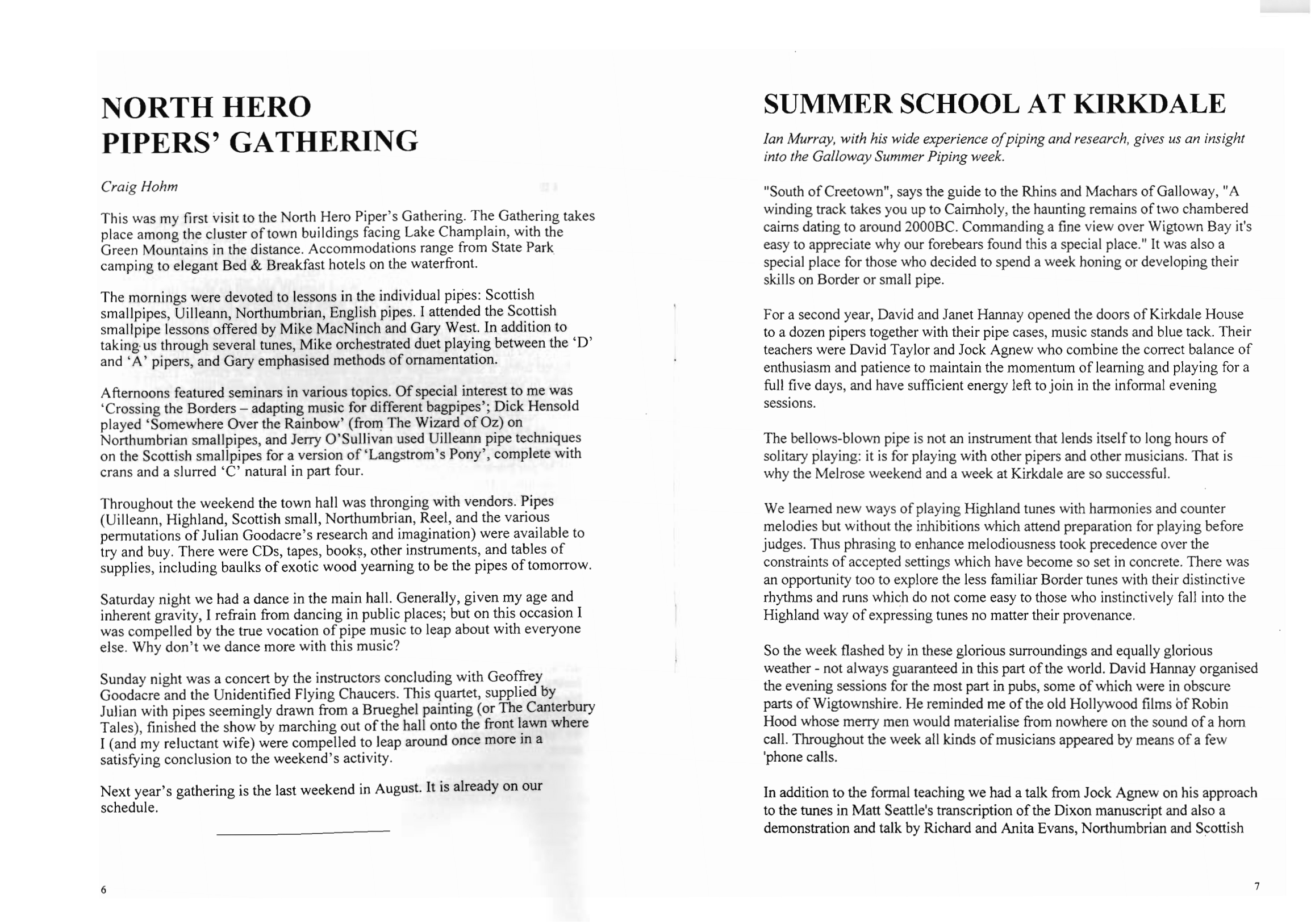SUMMER SCHOOL AT KIRKDALE


Ian Murray, with his wide experience of piping and research, gives us an insight into the Galloway Summer Piping week.
“South of Creetown”, says the guide to the Rhins and Machars of Galloway, “A winding track takes you up to Cairnholy, the haunting remains of two chambered cairns dating to around 2000BC. Commanding a fine view over Wigtown Bay it's easy to appreciate why our forebears found this a special place.” It was also a special place for those who decided to spend a week honing or developing their skills on Border or small pipe.
For a second year, David and Janet Hannay opened the doors of Kirkdale House to a dozen pipers together with their pipe cases, music stands and blue tack. Their teachers were David Taylor and Jock Agnew who combine the correct balance of enthusiasm and patience to maintain the momentum of learning and playing for a full five days, and have sufficient energy left to join in the informal evening sessions.
The bellows-blown pipe is not an instrument that lends itself to long hours of solitary playing: it is for playing with other pipers and other musicians. That is why the Melrose weekend and a week at Kirkdale are so successful.
We learned new ways of playing Highland tunes with harmonies and counter melodies but without the inhibitions which attend preparation for playing before judges. Thus phrasing to enhance melodiousness took precedence over the constraints of accepted settings which have become so set in concrete. There was an opportunity too to explore the less familiar Border tunes with their distinctive rhythms and runs which do not come easy to those who instinctively fall into the Highland way of expressing tunes no matter their provenance.
So the week flashed by in these glorious surroundings and equally glorious weather - not always guaranteed in this part of the world. David Hannay organised the evening sessions for the most part in pubs, some of which were in obscure parts of Wigtownshire. He reminded me of the old Hollywood films of Robin Hood whose merry men would material- ise from nowhere on the sound of a horn call. Throughout the week all kinds of musicians appeared by means of a few ‘phone calls.
In addition to the formal teaching we had a talk from Jock Agnew on his approach to the tunes in Matt Seattle’s transcription of the Dixon manuscript and also a demonstration and talk by Richard and Anita Evans, Northumbrian and Scottish smallpipe instrument and reed makers. Even if none of us had any intention of making a reed it was a valuable experience to see the various skilful steps necessary to produce a reed which makes the most of an in- strument.
On 6th August it all came to an end. And as Enid Blyton was wont to say we returned home tired but happy. Our thanks for the undoubted success for the week go to David Hannay, to Janet Hannay, whose lunches were quite splendid, and to David and Jock for their unstinting help in improving our musicianship, if such an exalted term is justified.
